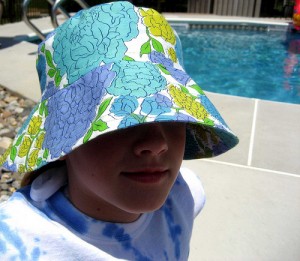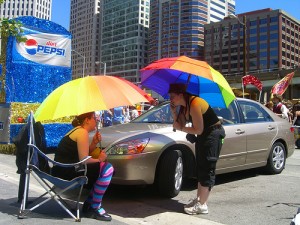 Well, next month is Skin Cancer Awareness Month, so I’m getting the jump on everyone here to talk about skin cancer. Part of this is that I feel that EVERY month should be one where we remind ourselves that we can get skin cancer, not only during the spring, summer and early fall. Temperature has nothing to do with the risk of skin cancer. As a matter of fact, if you asked a thousand people in this country what states have the highest rates of skin cancer, they’d get them wrong – they’d pick Florida or Texas or California. The highest rates of skin cancer are found in states such as New Jersey, New Hampshire, Connecticut and Vermont. Cancer by state
Well, next month is Skin Cancer Awareness Month, so I’m getting the jump on everyone here to talk about skin cancer. Part of this is that I feel that EVERY month should be one where we remind ourselves that we can get skin cancer, not only during the spring, summer and early fall. Temperature has nothing to do with the risk of skin cancer. As a matter of fact, if you asked a thousand people in this country what states have the highest rates of skin cancer, they’d get them wrong – they’d pick Florida or Texas or California. The highest rates of skin cancer are found in states such as New Jersey, New Hampshire, Connecticut and Vermont. Cancer by state
And don’t ask me why except perhaps people there suffer indoors in the winter and when the weather gets nice, they are so desperate for warmth that they jump outside without proper protection from the sun. Or perhaps it’s more genetic in terms of the percentage of people who live in those areas who have fair skin, light eyes and relatively little melanin in their skin for protection.
But no matter – skin cancer can be deadly and it’s a problem everywhere in the United States. As a matter of fact, one of the fastest growing cancers in the United States is malignant melanoma skin cancer (versus the Laura Bush basal cell ‘scrape it off/put a bandage on it and go home’ sort) in children up to the age of 18. This is serious, life threatening stuff, especially since people have a tendency to believe that children don’t develop melanoma. Even if they see changes in moles or marks on a child’s body, they don’t take the child in for an exam. Here are a few facts that should make you very upset if you are a parent or grandparent:
• Melanoma accounts for up to three percent of all pediatric cancers.
• Between 1973 and 2001, melanoma incidence in those under age 20 rose 2.9 percent.
• Melanoma is seven times more common between the ages of 10 and 20 than it is between birth and 10 years.
• Diagnoses — and treatment — are delayed in 40 percent of childhood melanoma cases.
• Ninety percent of pediatric melanoma cases occur in girls aged 10-19.
Skin Cancer Facts
 Since skin cancer is caused by cumulative exposure to the sun (or to tanning beds – I think that last statistic about teenage girls and melanoma points heavily toward that activity), I think that we need to look very seriously about protecting our children right from the get go. Think about all the time you have spent in the sun – not necessarily at the beach, but perhaps at a park in the summer, not covered up, not wearing a hat, not putting on sun block. Think about the number of times you got a bad sunburn (I shudder to think about that – I got a couple at the beach growing up that actually made me physically ill). I was also given photo-therapy for acne as a teenager and I used to ski a lot when I was young (and the sun reflecting off the snow is as bad as sun reflecting off the sand at the beach). It’s enough to make you lose sleep at night.
Since skin cancer is caused by cumulative exposure to the sun (or to tanning beds – I think that last statistic about teenage girls and melanoma points heavily toward that activity), I think that we need to look very seriously about protecting our children right from the get go. Think about all the time you have spent in the sun – not necessarily at the beach, but perhaps at a park in the summer, not covered up, not wearing a hat, not putting on sun block. Think about the number of times you got a bad sunburn (I shudder to think about that – I got a couple at the beach growing up that actually made me physically ill). I was also given photo-therapy for acne as a teenager and I used to ski a lot when I was young (and the sun reflecting off the snow is as bad as sun reflecting off the sand at the beach). It’s enough to make you lose sleep at night.
No matter what age you were then or are now; no matter what the ages of your kids, it’s time to take a good strong look at how to protect them and yourself, especially if you have concerns about the chemicals in sun blocks. The Environmental Working Group did a massive study on sun screens and found some that provided inadequate protection, some that broke down with exposure to sunlight and some with chemicals that caused great concern. Many sunscreens contain chemicals that have been found to be hormone disruptors, which means that they are something you do not want to use on anyone under the age of about 20. Safest Sun Screen?
The best sunscreens, frankly, are the old fashioned mineral based ones – with zinc and titanium. Most effective
But, let’s say you don’t want to be smearing anything on yourself or your kids – how can you protect little guys, who are running, swimming, and generally going nuts, from UVA and UVB rays? Wearable protection, that’s what.
Long sleeves, long pants, and a hat. There are many companies out there that are producing UV protection clothing for the entire family. If you want to make current wardrobes more UV-protective, you can buy a UV-wash from places such as Dharma Trading. UV Wash
Or, if you sew, you can find UV-protective fabrics at places such as Rockywoods UV Protection
On the other hand, a basic rule of thumb is that the darker the color, the more UV protective it is – so even with a regular cotton shirt, a dark blue long sleeved tee shirt is more UV protective than a white long sleeved tee shirt. And closely woven materials are more UV protective than materials such as mesh or gauze. And dry clothing is more sun protective than wet clothing (so much for going swimming and throwing on a white tee shirt).
 You can also find UV protective swim wear, such as is worn in Australia (which has the highest rate of skin cancer in the world and where in at least one of the ‘states’, all children’s school uniforms no matter what the age, contain a broad brimmed hat which is worn at all times outdoors), which contains options like swim tights or ‘rash guard’ shirts, bathing suits with longer sleeves and the light. A couple of places to find these are here:
You can also find UV protective swim wear, such as is worn in Australia (which has the highest rate of skin cancer in the world and where in at least one of the ‘states’, all children’s school uniforms no matter what the age, contain a broad brimmed hat which is worn at all times outdoors), which contains options like swim tights or ‘rash guard’ shirts, bathing suits with longer sleeves and the light. A couple of places to find these are here:
Solartex
I’m not even going to go the vanity route here to talk about protecting your skin from wrinkles and aging – because if you protect your skin from the sun, you will do that automatically. But here are a couple of issues that really do need to be addressed:
People, generally, don’t use sunscreen or they don’t apply it properly or don’t re-apply it. Sun Screen Use
Using indoor tanning parlors has been found to be addictive, in that it is not just getting that ‘toasted’ look – users associate the activity with warmth, relaxation, and a feeling of confidence. Stopping tanning causes anxiety. Tanning Bed Use is Addictive
There is still this issue from celebrities (who do tend to hale from California and have that ‘golden tan’ look) that tanning is fashionable, with it, and makes one look healthy.
We need to protect our kids. There is no such thing as a ‘healthy tan’ and especially one for little kids.
Keep the kids protected. Show some discipline as parents and grandparents:
Want to go to the beach? Go early and leave by 10 a.m. or go late in the afternoon. Cover yourselves and the kids up. Hats with an all-around-the-head 3” brim, long sleeves, long cover ups or pants. Use an appropriate sunblock and take a sun shelter or big umbrella to produce shade and stay in it. Don’t stay for hours and hours. You aren’t there to work on your tan.
Remember: the Sun is very powerful and does many wonderful things for us in terms of warmth, light, growing food and so on. But for us and our skin? The small amount we get through exposure of our hands is enough for Vitamin D. Protect yourself and protect the kids – 20 years from now, everyone will be thankful.
(photos by handpicked, Mary Mactavish, AF Ross)

You’re so right. I’m an American in Queensland Australia. Yep, all the kids have a big broad brimmed hat as part of their school uniform. It shocks me how little people protect themselves from the sun here, and it’s way harsher than back home in Texas. I learned if I go out with a lightweight hemp jacket, a big hat, sunglasses and some sunscreen then I don’t get summer insomnia which leads to depression. Used to happen to me every year.
Now that my skin is nice and pale, it looks so healthy. I know you aren’t going for vanity, but I think that will be part of what convinces people to change their habits. All I have to do here is look around at people my mother’s age. Almost across the board, their skin is heavily freckled, perma-scorched or wrinkled and baggy. That, if nothing else, is a constant reminder to me to put on my sun gear before going out. It’s kind of horrific. I’m only 26, and people often take me for younger, telling me my skin is so fresh.
Steph – My mom (from Scotland, with red hair, green eyes and freckles) used to put herself out in the middle of the day all the time when I was young to tan her legs. She did this for years. And I won’t even discuss how much sun she used to get out in the garden or when we used to go to the beach for two weeks. Late in life, the fronts of her legs were this permanent reddish brown – the skin was horribly dry. The fact that she did not get skin cancer was a miracle. My daughters had friends who used to go to the tanning parlors all the time. One of the problems, too (and I did it here too – I found all sorts of really horrible photos on flickr showing people after their skin cancer surgeries) is that people are under the impression that it’s not a big deal, not realizing that the rate of growth of really disfiguring melanoma is very high. Everyone should wear long sleeves and a hat, seriously.